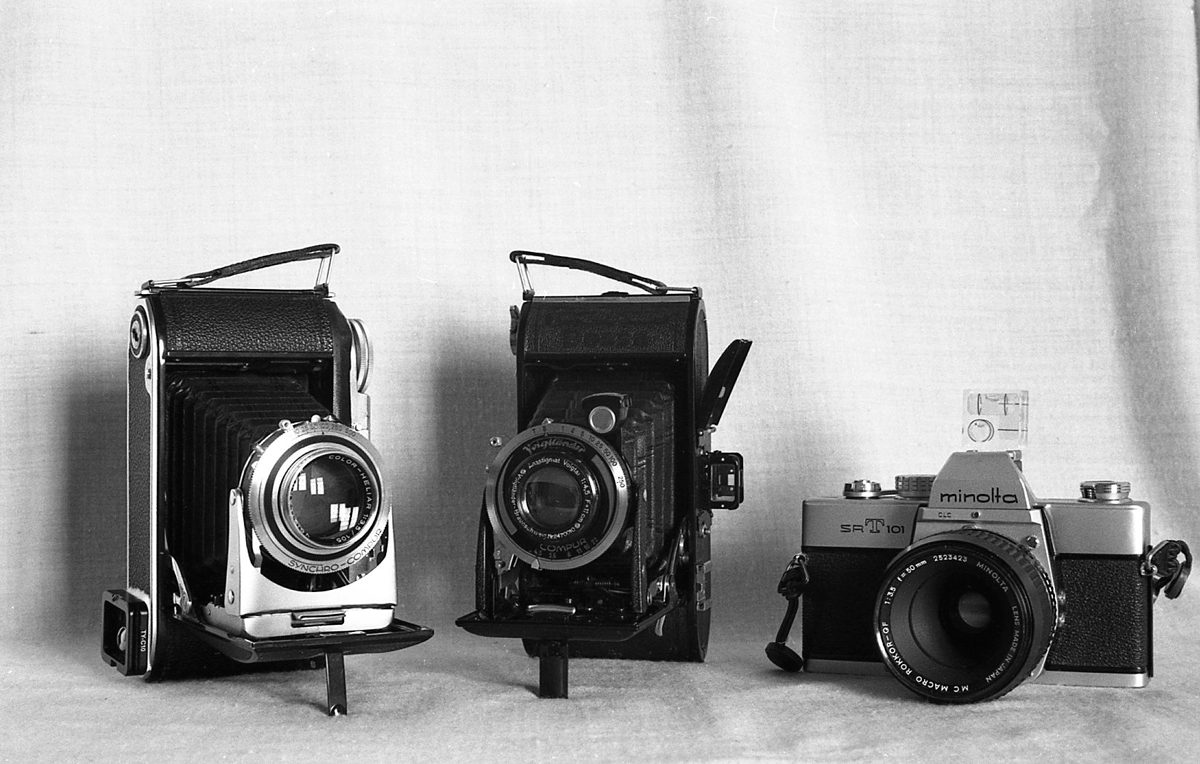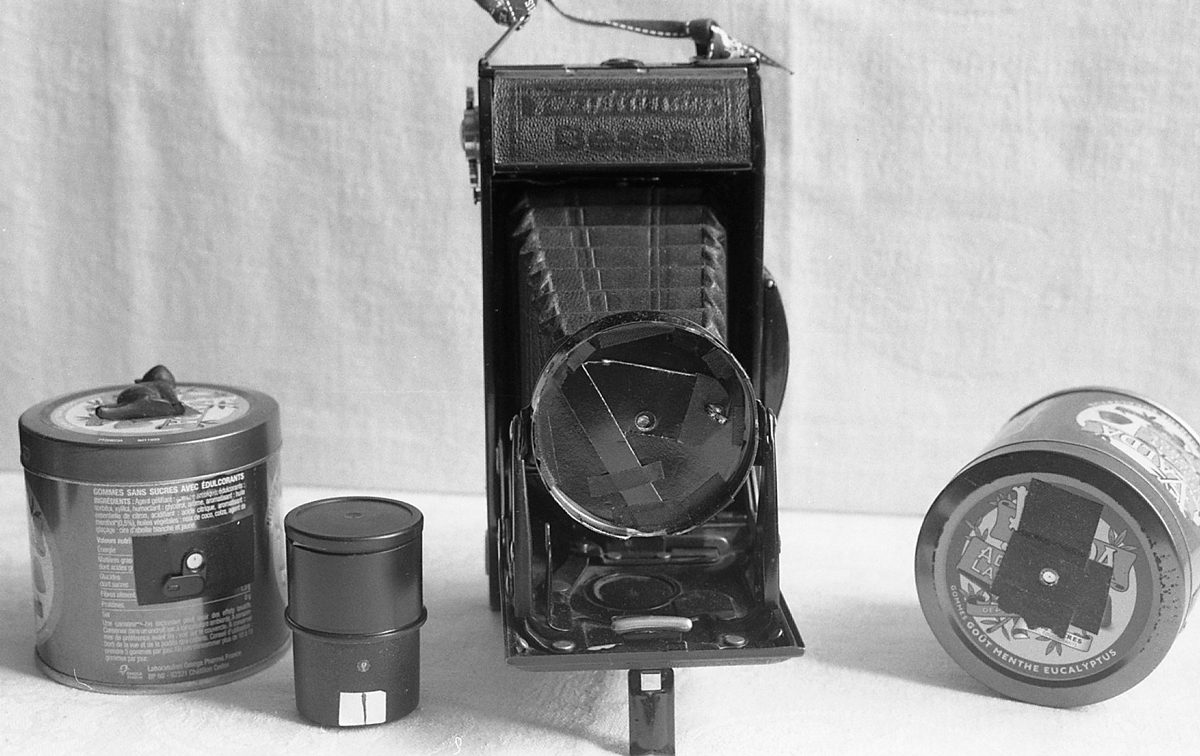In Focus - Margaret Fitzgerald Posted On 11th November 2021 To Magazine & In Focus

A well know part of the film photography community, especially on Twitter where she goes by @justgispy We were thrilled when Margaret Fitzgerald agreed to be the subject of this week's In Focus interview.
Section 1 Background
Share your favourite image / print shot on ILFORD film and tell us what it means to you?
I can't really say that any one photo I've taken over the years is my favourite, but this one is very memorable.
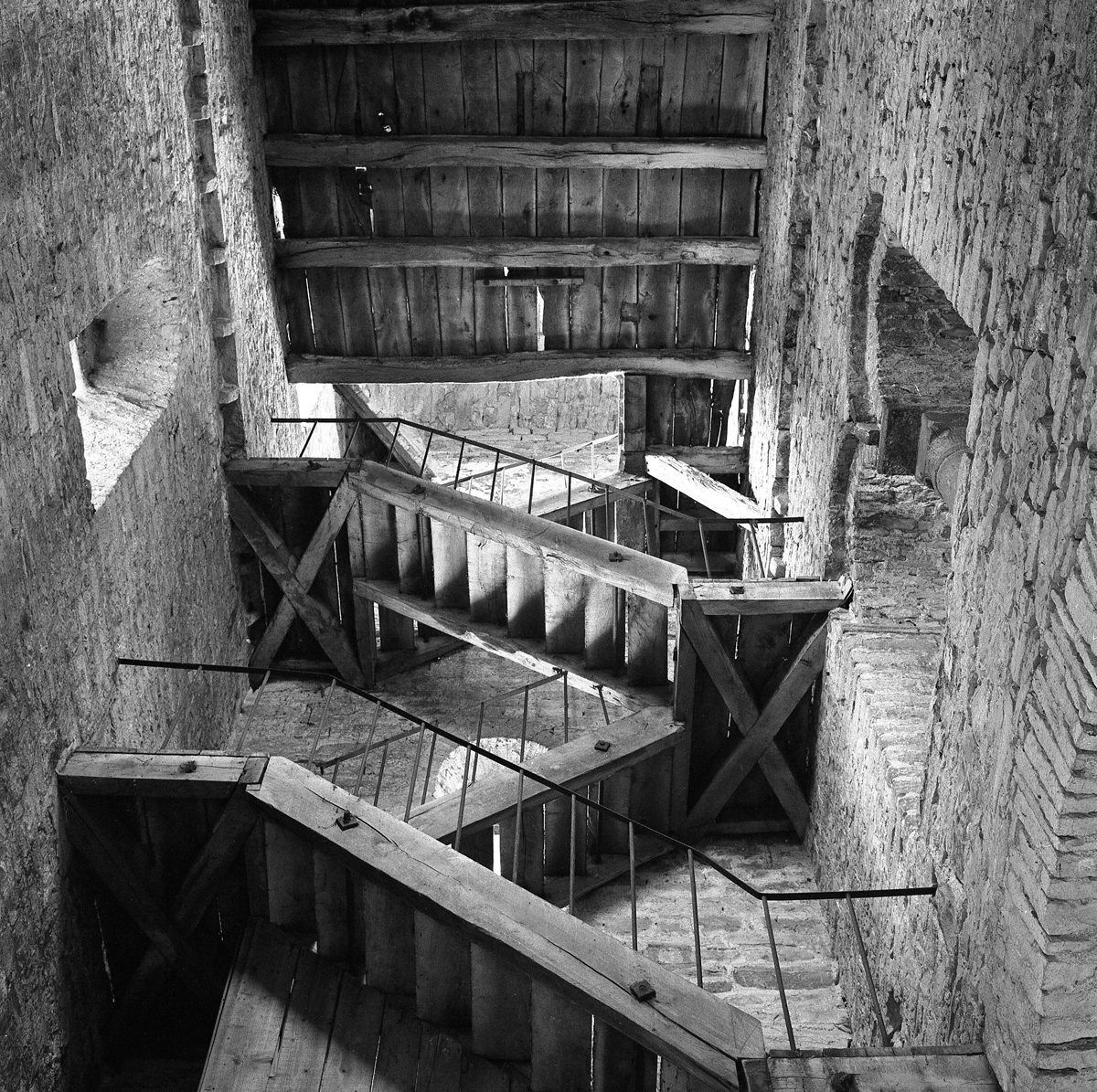
Rolleiflex-TLR,-Ilford-HP5--Church-of-St.-Philibert,-Tournus,-Burgundy
It's one of the first photos I took using a new-to-me Rolleiflex several years ago. It's taken in the loft of the church l'Abbatiale St-Philibert, in Tournus, Burgundy. When I saw the scene, with the rickety old stairs leading to the bell tower and the extraordinary light, I saw its potential as a photo. It was March, bitterly cold with a light snow falling outside. In fact it was the snow that acted as a reflector, illuminating the interior of the tower, because otherwise, it was quite dim.
To frame and take the photo required some manoeuvering. With the camera on a tripod, backed up against the wall of the church, I scrambled onto a window ledge, to try and frame the image. There was a fair amount of calculated guess work involved. As the light was quite dim, it was difficult to see the image on the ground glass, and the tripod head was cantilevered upwards. Focus was set on infinity, and I couldn't reliably meter for my settings. Film was HP5, the last three frames on the roll, so I bracketed, f8 at 8, 10, and 14 seconds, using a cable release.
While all three negatives turned out fine, the last one, 14 seconds, has the greatest shadow details, so it's the one I print up.
Just in case anyone doesn’t know who you are or what you do can you give us the overview?
My name is Margaret, I'm a fine art analogue photographer living in the Rhone-Alpes region of France. Photography has always been a part of my life, both in front of and behind the camera. As to subject matter, it ranges from landscape, people, still life, abstract images discovered by the play of light and shadow, pinholes… I develop my films and make prints in the darkroom, and also taught introduction to printing for many years.
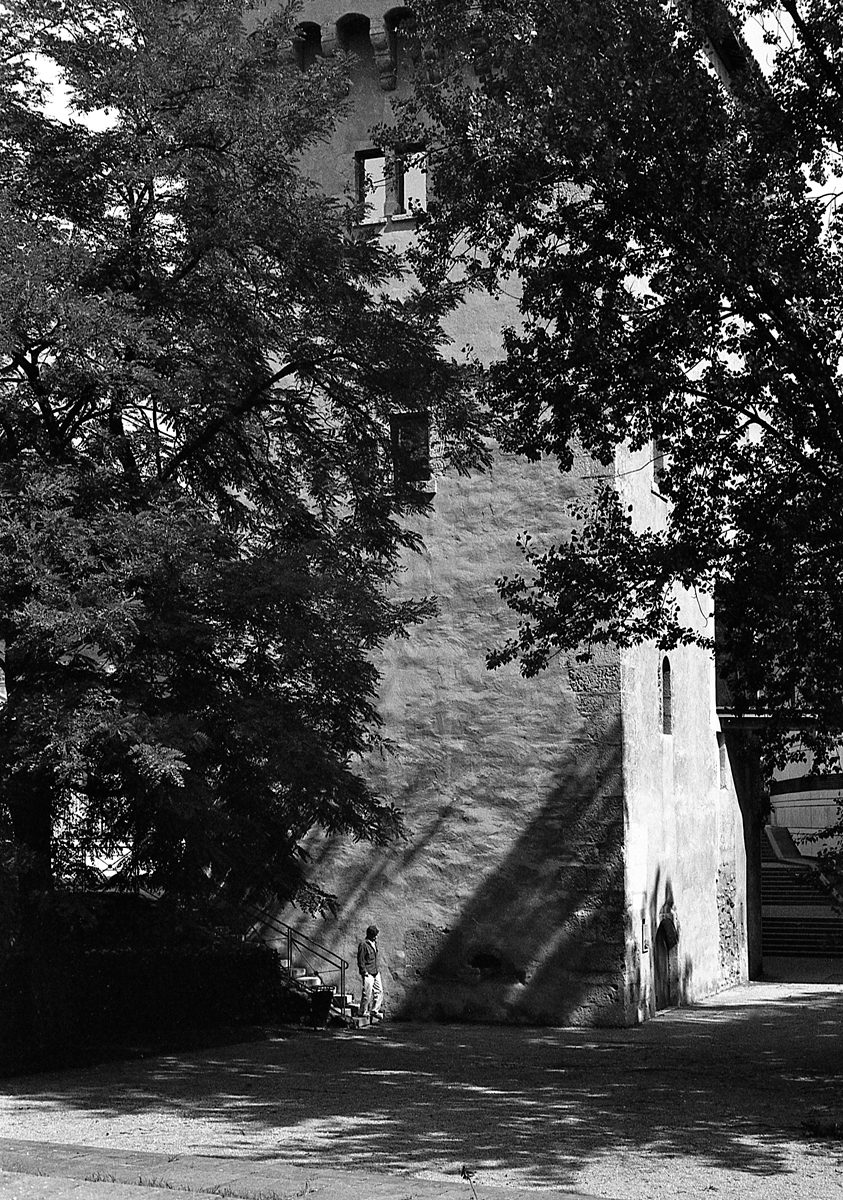
Leica-M6-Delta-100-Tour-de-l'Isle,-Grenoble
How and why did you get started shooting film?
I've always used film, long before digital arrived. My first camera was my mother's box Brownie, followed some years later by a Minolta HiMatic, which I still have.
I started with black and white film, then added colour to the mix for many years. About twenty-five years ago I turned exclusively to black and white. Shortly after, I took a few workshops on developing film and printing in the darkroom. Straight away, I was enamoured by being in the dark and printing, and spent as much time in the darkroom as possible. Exposing the film in the camera was just the start of the process, with developing and printing being the end result. The darkroom is a wonderful place to be.
I spent several years on my own, developing film, making contact sheets and prints, and basically getting a lot of practice in. My printing skills weren't bad, but I reached a point where I could see they were just “not bad”, wanted to improve them, and knew I could not do that on my own.
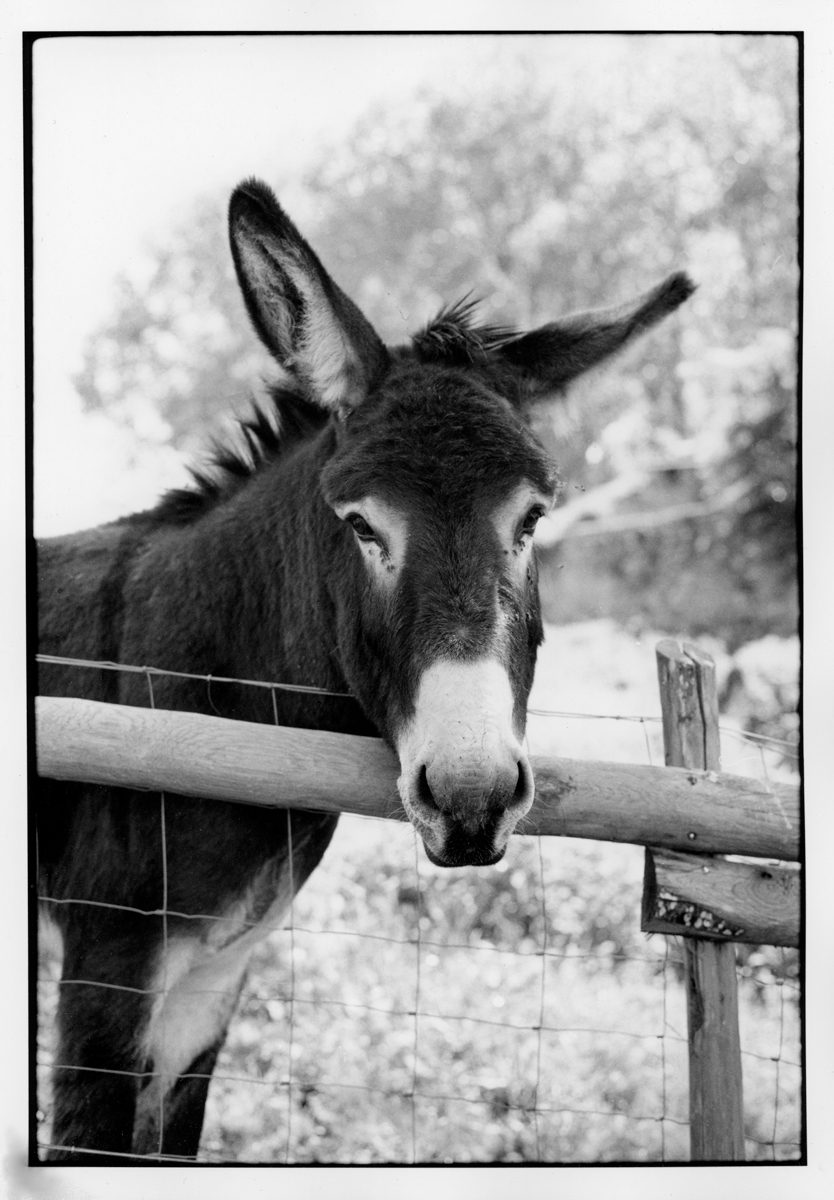
Leica-M6-Delta-100-@-50
Who has been your biggest photographic inspiration to date?
The late photographer Bill Didcock, a genial Scot who ran photography workshops in the south west of France.
It was a stroke of luck to find Bill when I wanted to improve my printing ability. Little did I know it wouldn't be limited to printing, but would cover and improve my photography skills and practice.
In a four day workshop, we started with learning about film sensitivity, moved on to printing on fiber paper and finished with cutting matts and framing our prints. Along the way, there was correct exposure of the film, developing, printing techniques using fiber paper, selenium toning and spotting the dry print.
Bill was incredibly patient, knowledgable and a great teacher. You never knew when, seemingly out of the blue, he would ask a pertinent question about what you were doing at that precise moment, which always made you stop, think, and try to articulate a sensible answer, showing you knew and understood what you were doing, and why. That was as essential as everything else he taught. He emphasised that you do the best work you possibly can, you present only the best of that work, and he let you know he believed you could do that.
The photography discussions continued long after the days sessions ended, and long after the workshop was over. Bill was a teacher, mentor and dear friend, and is sorely missed. I still put into practice what I learned from him, and have also passed much of that knowledge on in the photography workshops I've headed.
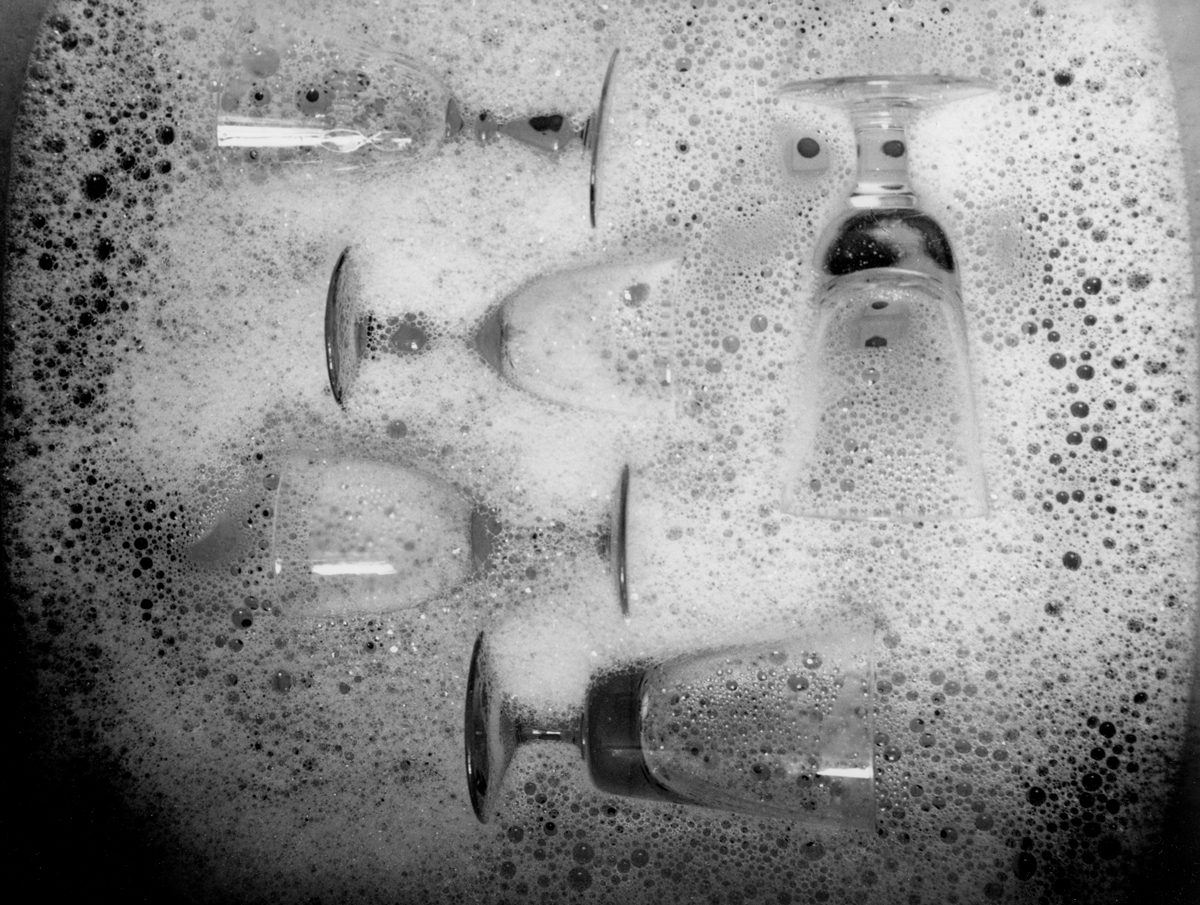
Leica-M6-Delta-100-@-50
What is the best piece of photography tip or advice you have ever received?
The best I received was from Bill, to expose for the shadows and develop for the highlights. He also stressed the importance of getting everything as close to being right as possible in camera, so as to work as efficiently as possible later in the darkroom (or in front of a computer screen, as the case might be).
What film photography related projects are you currently working on (or are in the pipeline)?
I recently had an exhibition of sixteen pinhole photographs, all of them taken in Grenoble.
For those who might not know, a pinhole camera is the simplest photographic equipment. Using one is a process that requires time, patience and a certain determination. Initially, framing is difficult as there is no view finder, but with time and experience, it is possible to pre-visualise the scene to aid in framing it.
The pinhole cameras I use are either those I make myself, using the plastic cannisters that 35mm film comes in, lozenge tins, or the body of an old folding camera which I have modified. To make the pinholes, I use a fine sewing needle to pierce a thin bit of metal. The films used are Ilford's HP5 and Ilford Delta 100 in both 35 and 120 format.
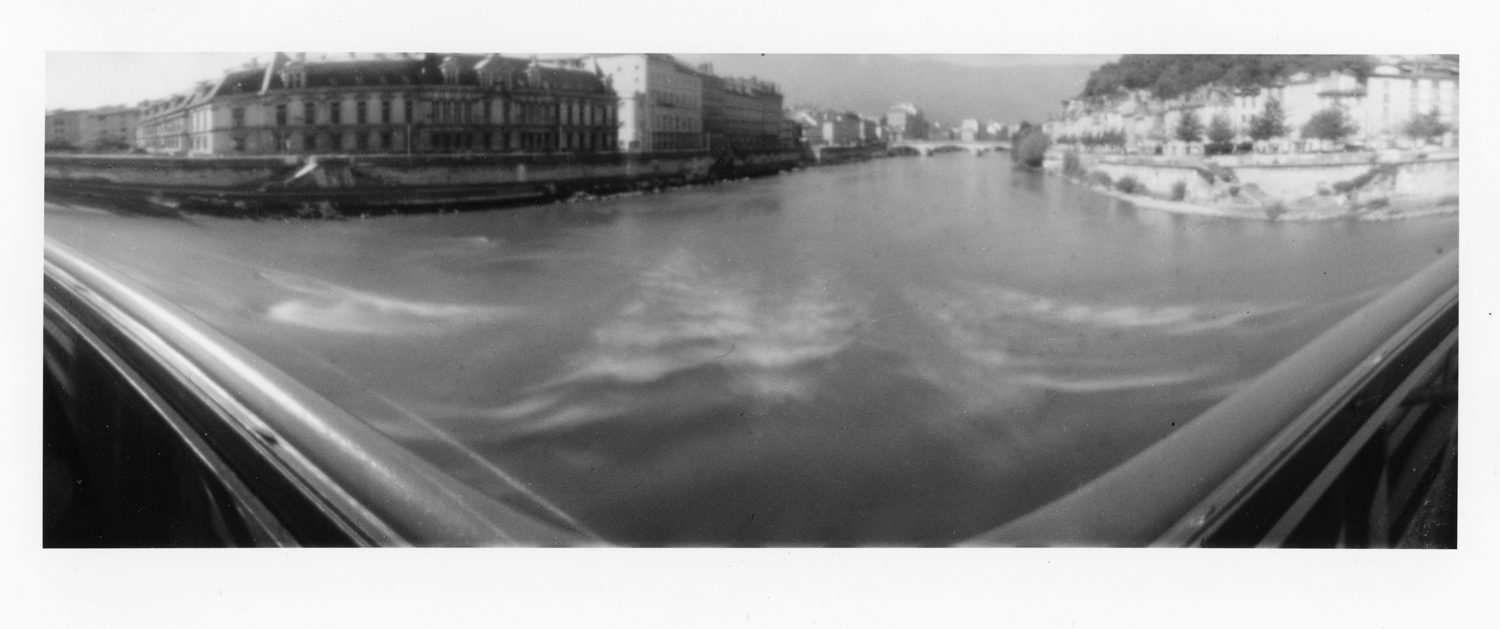
Film-cannister-pinhole-camera-HP5
The photographs I had in the exhibit, taken with my cameras, are of different areas of Grenoble: the bridges and quais of the Isère river, the Jardin des Plantes, the Jardin de Ville… All are well suited to the practice of pinhole photography, using either a round model where the film follows the curve of the tin or container, or with a camera body where the film is held flat and is parallel to the pinhole lens.
When the film is curved rather than flat, the images give surprising and unpredictable results, with the lines and surfaces curved and deformed. It was when I discovered the first negative images of the bridges that span the Isère that the idea for this series took root. The bridges appear to be stretched, curved, transformed, and the river seems to flow in two diametrically opposed directions. With each new expedition, I drop any preconceived ideas I might have, to leave room for the discovery of the unexpected. The results free me and leave me open to new perspectives.
I'm not done with taking photos along the river and of the bridges, and am continuing the series using both pinhole cameras and lens cameras. The subject matter is endlessly fascinating, and changes constantly, depending on weather, season, time of day, light, and so on.
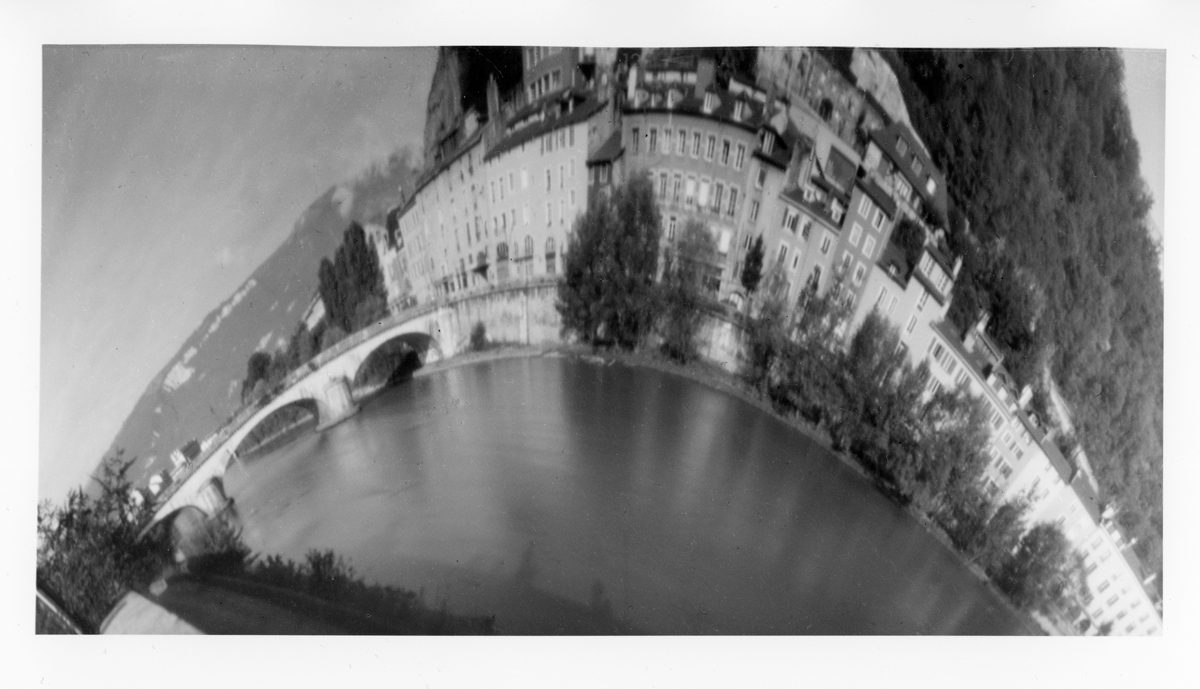
Round-Pinhole-camera-Delta-100-exposed-@-50
What / where is your next shoot and how do you decide what film / kit you will use?
If it's a continuation of the ongoing river and bridges series mentioned above, the camera will be a Voigtländer Bessa II, currently loaded with Delta 100, or using a pinhole. It might also be a random excursion in town, in which case the camera will more likely be the M6, again loaded with Delta 100. Or it could be something completely different, if an idea comes to me out of the blue!
What are your photographic goals going forward?
To get back into the darkroom and do more printing, and maybe learn some alternative processes, such as lith printing. I've done a bit of cobalt toning on prints, and want to do do more of that.
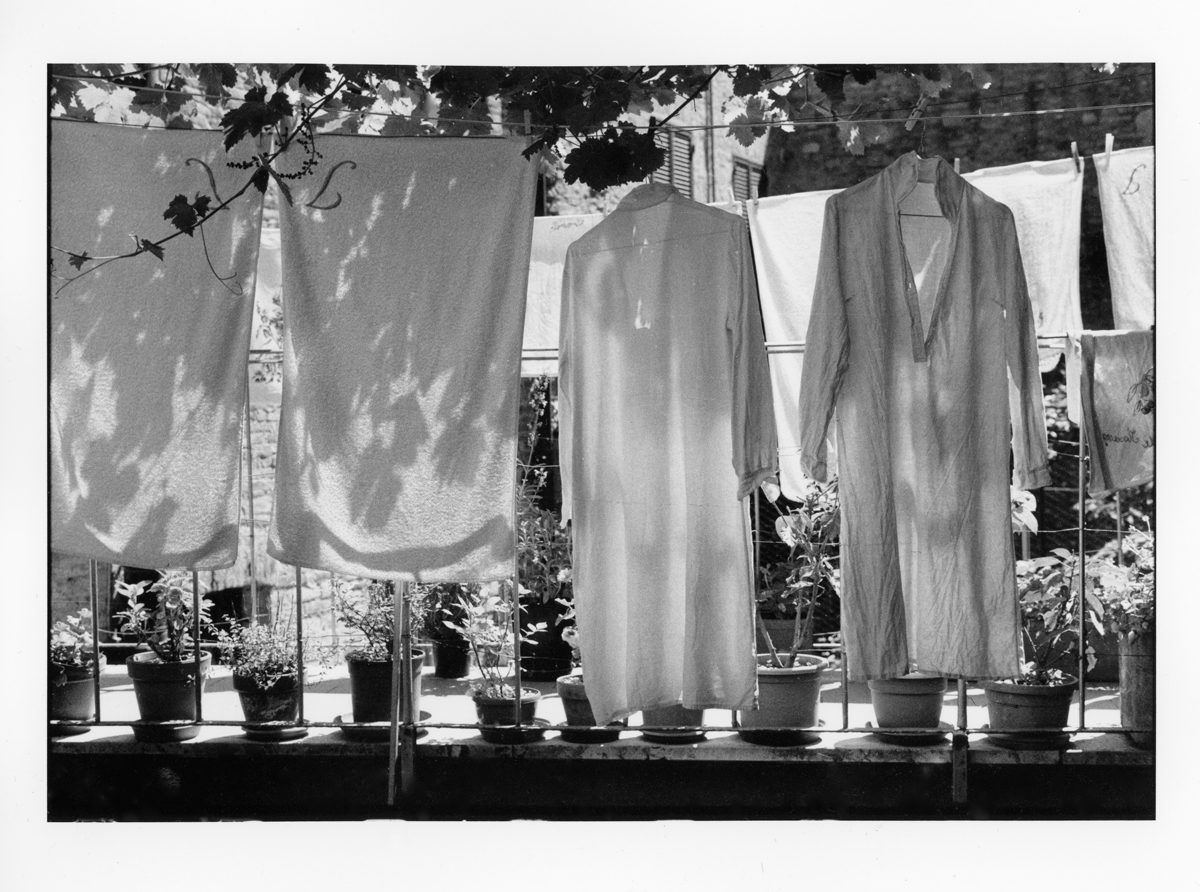
Leica-M6-Delta-100-@-50
Section 2 - Shout outs
We all need a bit of inspiration and love so this is your chance to tell the community about yours – from the film photographers whose work inspires you, the labs you trust with your film, your ‘go to’ film photography stockists, your favourite community darkrooms or just anyone in the community who you feel deserves a special mention.
Give a shout out to your 3 favourite film photographers (not photography hubs) currently active on IG or Twitter and briefly tell us why others should follow them.
Allysse Riordan, Paula Smith and Karin Lizana are all doing interesting work and are fine photographers. They are observant, inquisitive, trying and learning various techniques, and passionate about film photography. One of the things I love about them is each of them will reach out and ask for help if need be, and also offer help, if someone asks and they can do so. They are three photographers who are part of a really supportive film community on Twitter - it wasn't easy to limit this to three people!
Give a shout out to your favourite photography YouTube channels (apart from the @ilfordphoto one).
I rarely use YouTube channels, usually forget they exist and am unfamiliar with most of them. Nevertheless, I can recommend these two.
Lina Bessonova for those who are interested in printing techniques. She explains things really well, and is always interesting.
Joe van Cleave has some great YouTube videos, especially helpful with pinhole photography.
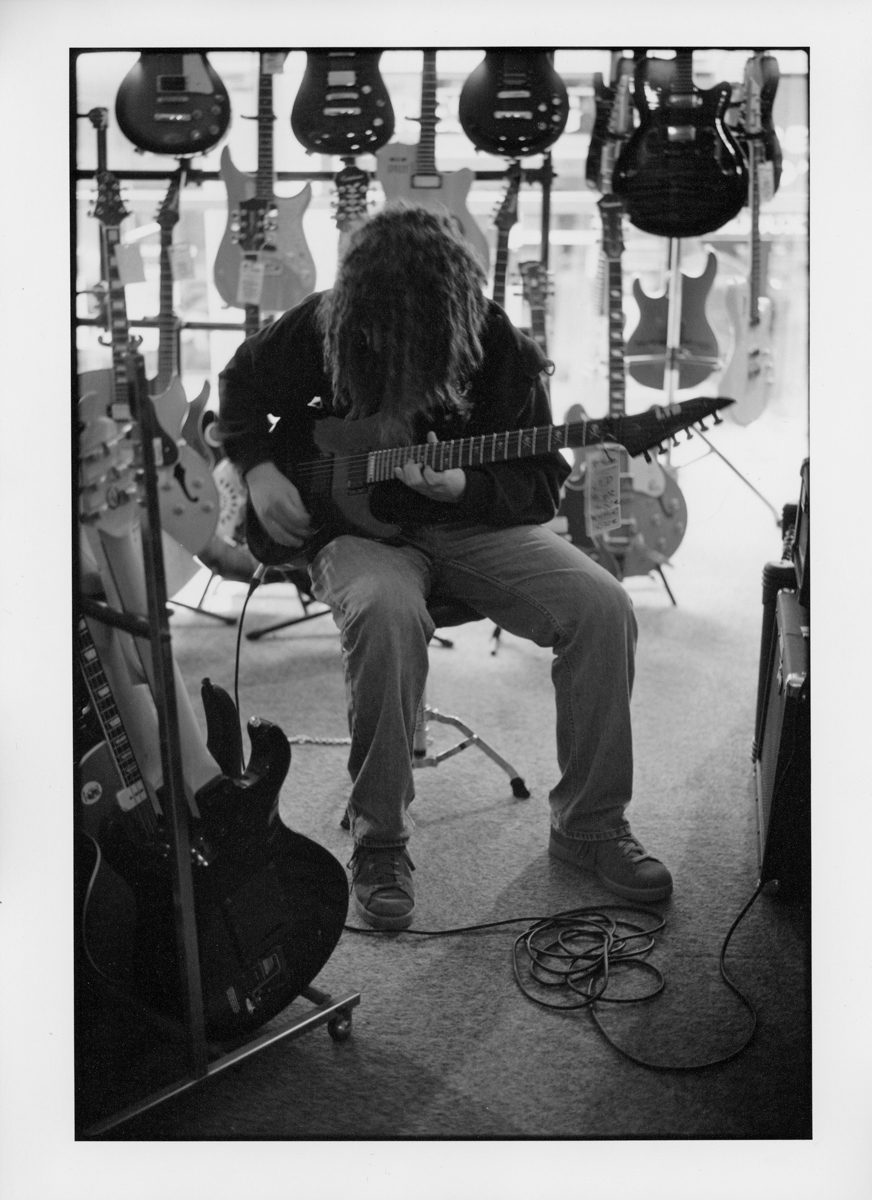
Leica-M6-Delta-100-@-50-Neil
Give a shout out to your favourite photographic retailers (name, location and website).
Fotoimpex and Macodirect in Germany are both excellent.
Kameratori in Finland, for used and vintage cameras, lenses and accessories.
Give a shout out to your favourite lab service, if you have one.
I develop and print my photos, so don't have a lab service to recommend.
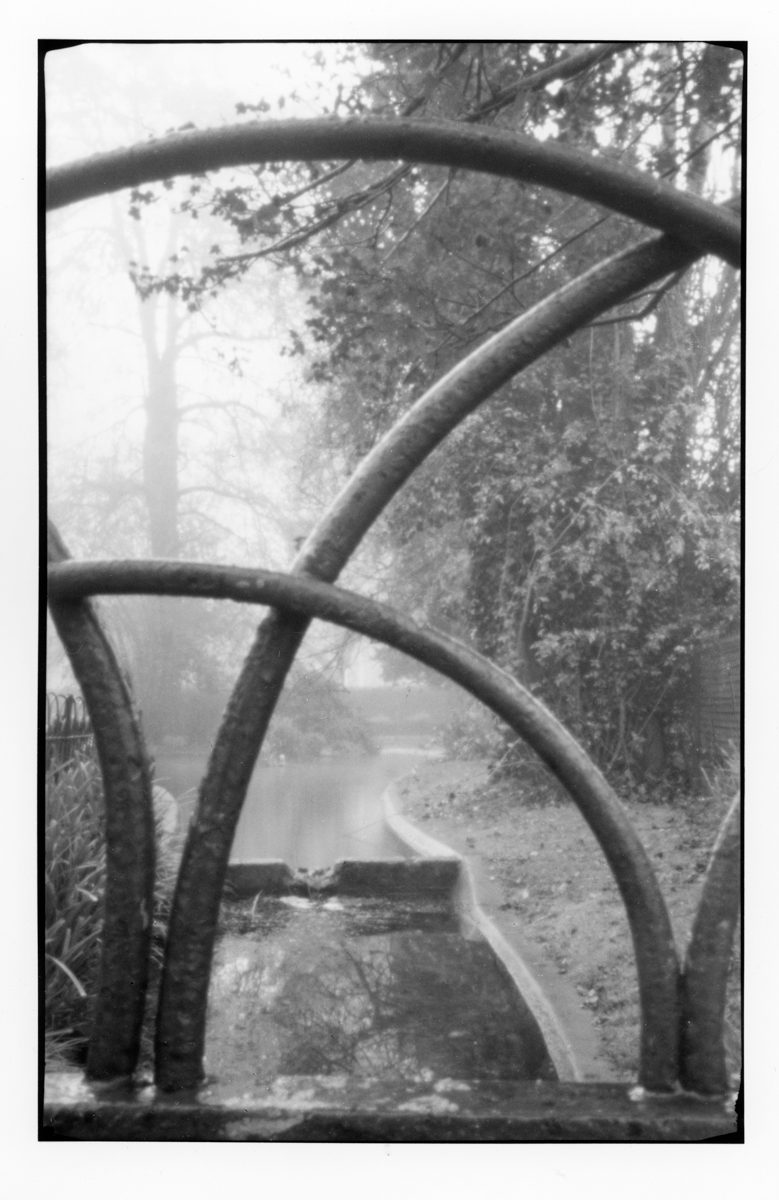
6x9-pinhole-camera-HP5
Section 3 - Favourite kit
What film cameras do you own and which is your favourite? (Please send us a picture of it if you can).
Among the cameras that actually work, these are the ones I favour and use the most:
6x6 medium format, a Rolleiflex 3.5.
6x9, I have both a Voigtländer Bessa II and an older Voigtländer Bessa, both of them folding cameras. Since I also have the mask for the 6x9, it means they convert easily to 4.5x6, which multiplies my available options for medium format.
35mm, my favourites are my Leica M6 with a 50mm lens, and a Minolta SRT 101 with various lenses. My favourite lenses for the Minolta are the Rokkor 50 and 100mm macros.
- Cameras, l to r : Voigtländer Bessa II, Voigtländer Bessa, Minolta SRT 101
- Pinhole Cameras, l to r: Lozenge tin, film cannister, converted 6×9 Voigtländer, lozenge tin
I can't say I prefer the rangefinder to the SLR. They're both excellent, and while both can be suitable to certain subjects or projects, they each have advantages the other doesn't.
In pinhole, my cameras are home made. I converted an old, non-working Voigtländer 6x9 to pinhole, and again, since I have a mask for the Voigtländers, its use increases to take 4.5x6 negatives.
I have about a dozen pinhole cameras made from Ilford's plastic film cannisters, and half a dozen made from lozenge tins. In the film cannisters, I use 7cm long strips of 35mm film, and in the lozenge tins, 12cm long strips of 120 film. I use film, not paper, in my pinholes, as I want to make prints from them.
If there is one unifying feature of these cameras, they are all fully functional without need of a battery.
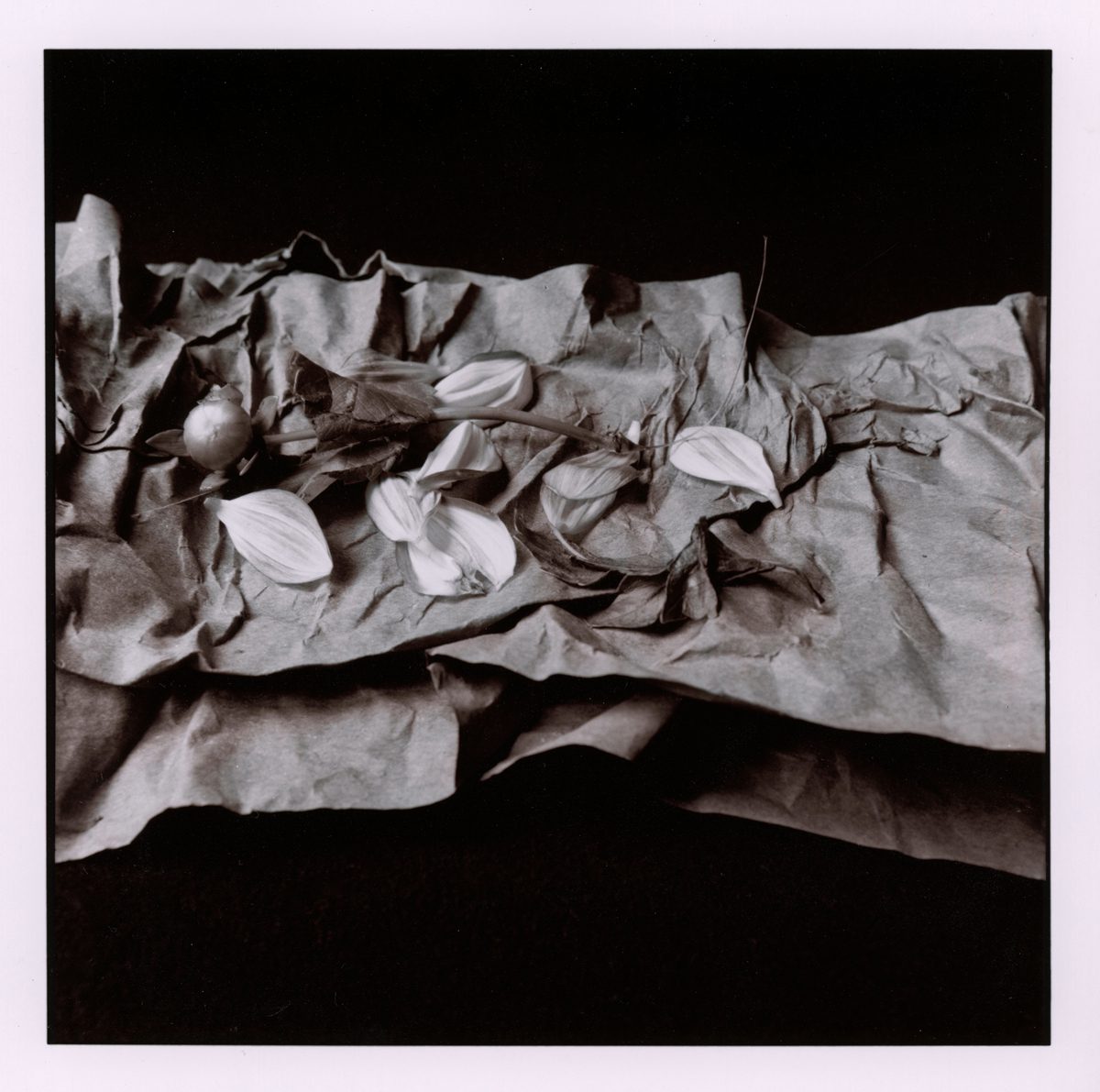
Rolleiflex-TLR-Delta-100-exposed-@-50
Aside from your camera, lenses and film what accessories make it into your camera bag?
A spirit level, one of the best accessories. Cable release, tissues, lens cleaning cloth, notebook and filters. Depending on what camera I'm using and what I intend to do, a tripod or monopod comes along.
What is the best piece of photography kit you have found or been gifted?
Rolleiflex used to make extension hoods for the TLR, which inspired me to make one. After some experimentation, using two layers of tightly woven black cotton and thin bamboo skewers for the struts, it worked out well. It slips over the focusing hood, helps to reduce light reflection on the focusing screen, and makes it much easier to frame and focus. I've made several since, for friends who have Rolleiflex or Bronicas.
I've received a tripod and a monopod as gifts. I can't do without them.
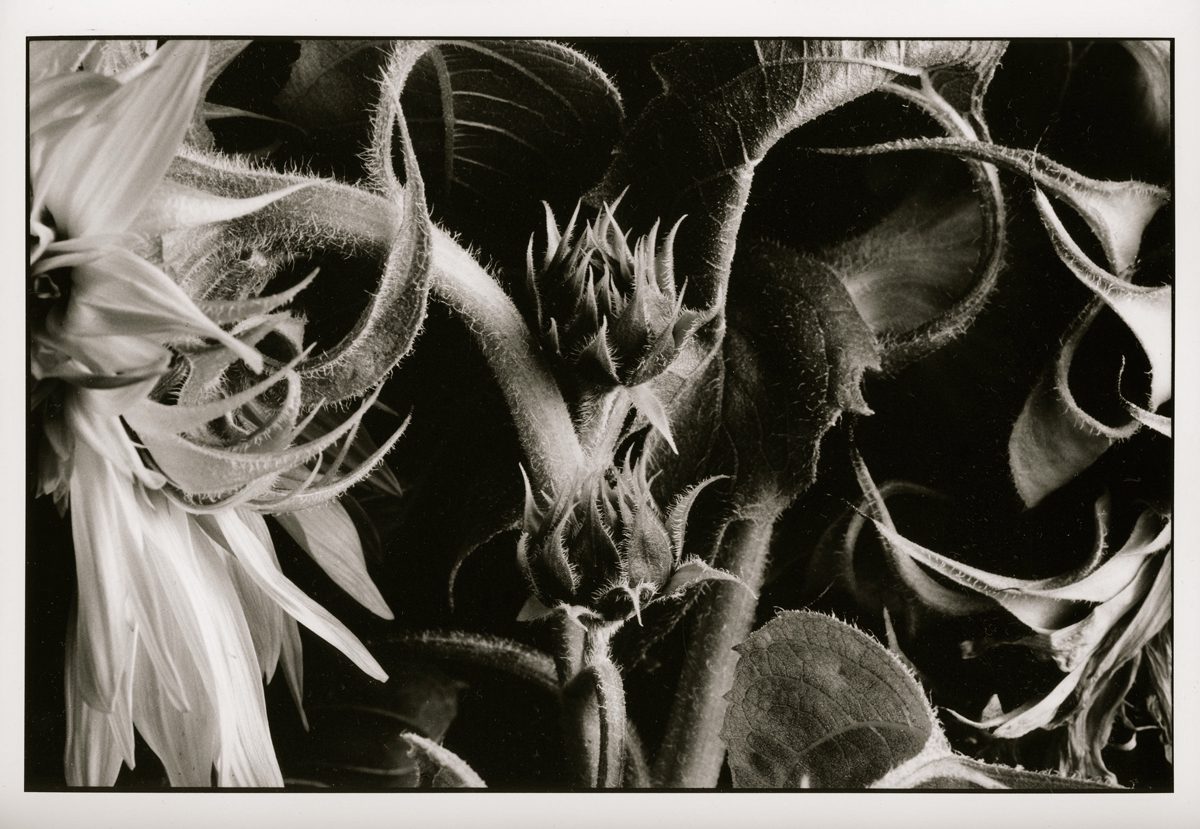
Minolta-SLR,-Rokkor-50mm-macro-lens,-Delta-100-@-50
As this is an ILFORD interview it would be remiss of us not to ask about your favourite ILFORD products. Tell us you favourite ILFORD film, paper or chems and why?
My favourite films are Delta 100, which I consistently expose at 50 and underdevelop, and HP5. They are reliable and give me the results I want. Also, the Ilford plastic cannisters 35mm film comes in are the best for making pinhole cameras: They are black, light tight, and the cap fits the base quite snugly. Finished fiber based prints are selenium toned, using Harman Selenium Toner.
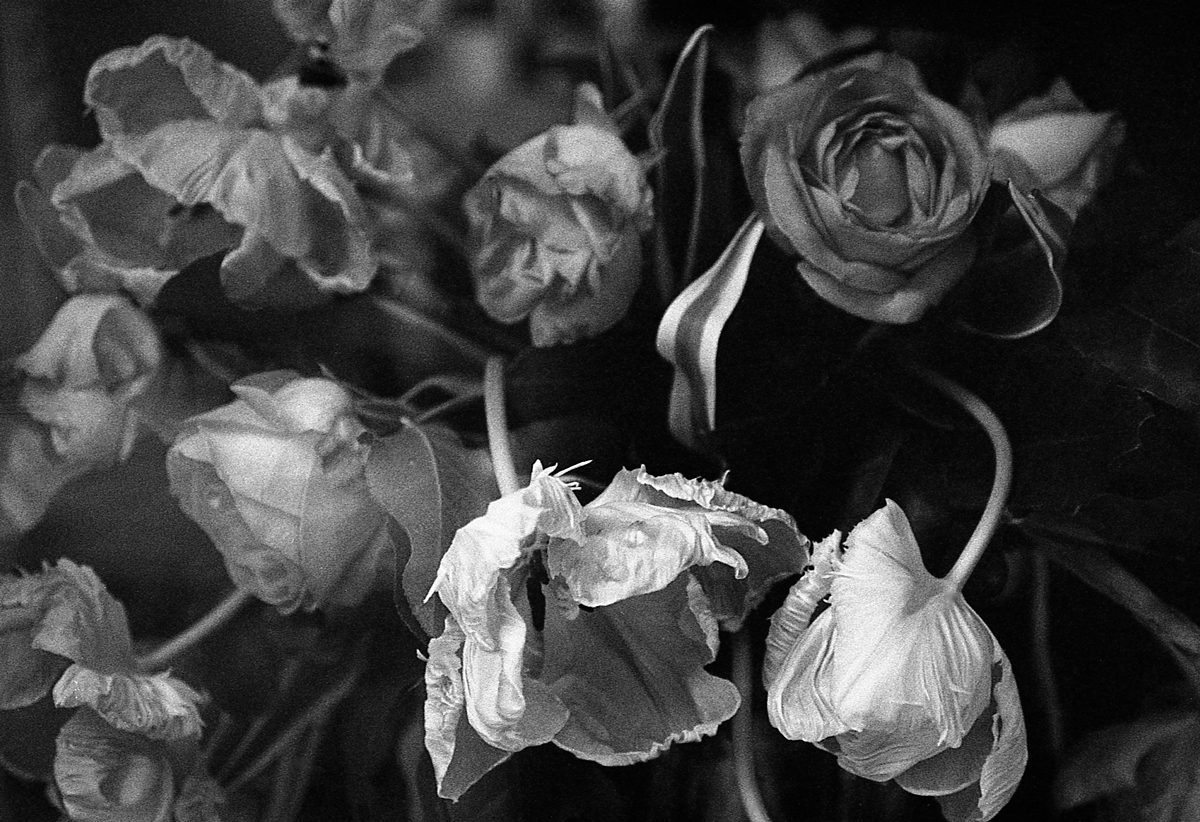
Minolta-SLR,-Rokkor-50mm-macro-lens,-Delta-100-@-50
And finally…
Nominate one other person you think should fill in this form and we will reach out to them
Debra Wilson, debrawilsonsays on Twitter, and her site, Vladography
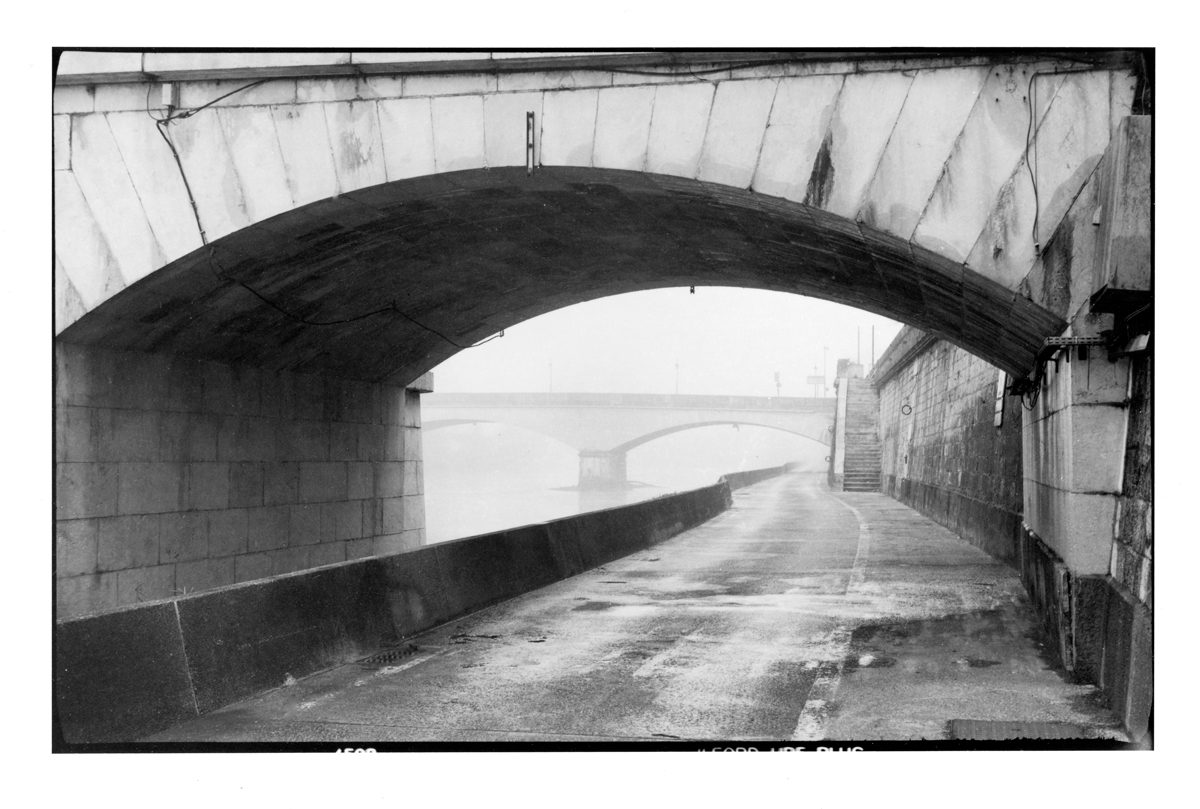
Voigtländer-Bessa-6x9-folding-camera,-HP5
All Images © M.C.FitzGerald
About The Author

Margaret Fitzgerald
I have been involved in fine art through my studies and working in theatre costuming, textile art, costume and textile research and teaching. For several years, I taught introductory photography and darkroom workshops. In addition to photography, I read voraciously in English, French and Italian. I also enjoy drawing and writing.
Twitter @justgipsy







